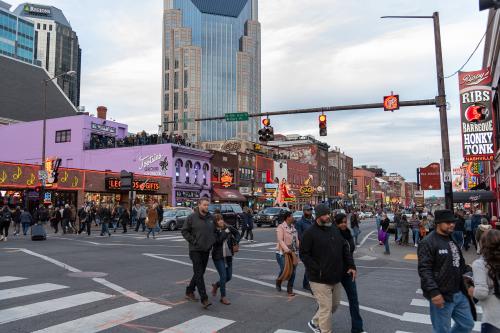New trends in immigration are changing communities across the United States. The movement of immigrants from abroad to the heart of America’s largest cities is no longer the dominant pattern as it was in the past. The restructuring of the U.S. economy and the accompanying decentralization of cities and growth of suburbs as major employment centers have shifted immigrant settlement to a new class of metropolitan areas. Emerging destinations tend to be metropolitan areas with more recent development histories, largely suburban in form. Many of the newest destination areas have little history or identity with immigration.
This brief highlights the recent trends in immigration, including the new geography of immigration and changes in the demographic characteristics of immigrants.
In some new destination areas, the pace of immigration has aroused social conflict and anxiety over immigrants’ legal status and the costs of providing services such as healthcare and education to the children of immigrants. Local pressures have motivated many public officials to act—passing state and local laws and instituting new policies aimed at immigrants. These responses have ranged from those that serve to accommodate and integrate immigrants to those that seem designed to explicitly intimidate and exclude immigrants.
These current trends and new settlement patterns result in many more states and municipalities with a stake in the passage of federal immigration reform.
Background
Consistent with the current economic recession and its concomitant decline in economic opportunity, immigration shows signs of recent slowing after the great wave of 1990s immigration. Today, the Census Bureau estimates more than 38 million foreign-born persons reside in the United States, making up nearly 13 percent of the U.S. population. According to estimates from the Pew Hispanic Center, 36 percent of the foreign-born population are naturalized U.S. citizens, 31 percent are legal permanent residents, 30 percent are unauthorized; the remainder are legal temporary immigrants.
Download Full Report » (PDF)


